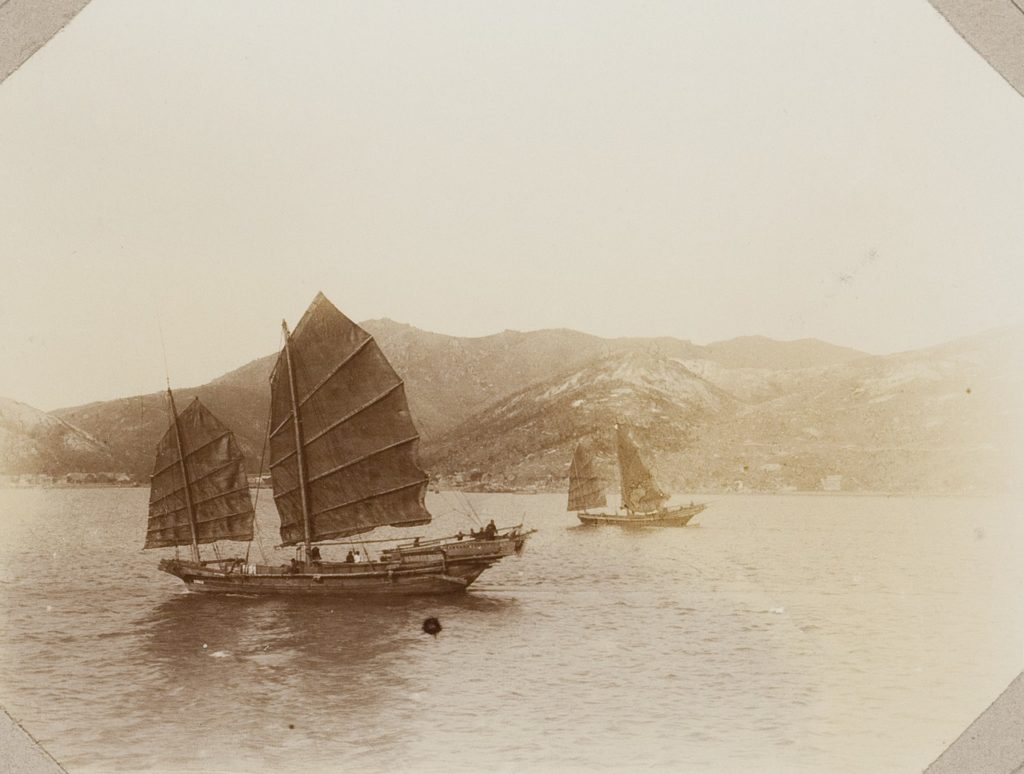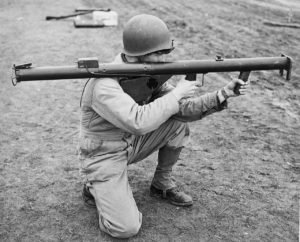I had run across this story a while back from a website called "Navy General Board", and it has a lot of historical stuff from the age of sail to present that Old AFSarge would like and old NFO has experienced. It has been in draft form for a while, I decided to dust it off, I am working on another blogpost but it ain't ready and I already had a couple of days of no posting on my blog because real life has kept me really busy, So with out further Ado....
What was the last naval battle of World War II? When was the last battle between sailing ships? When was the last time that the United States boarded an enemy ship in combat? Would you be surprised if all three of those things occurred simultaneously? In today’s article, we look at one of the most bizarre naval battles of all time.
Navy Lieutenants Livingston Swentzel Haimen and Stuart Pittman were traveling to Shanghai, China from Haimen, China. They were each in command of a Chinese junk. All together, the ships were manned by seven Americans and twenty Chinese soldiers.
The journey was largely uneventful until August 21, 1945 when they
spotted another junk off in the distance. Upon noticing the American
ships, the mystery Junk immediately came about and opened fire. This
junk was crewed by five Japanese officers and seventy-eight enlisted
men. It was also heavily armed with a 75mm pack howitzer, six machine
guns, and over one hundred rifles. The Japanese opened fire with the
howitzer first and then followed up with machine gun fire.
The first howitzer round struck Swentzel’s junk, cutting down its foremast. The crew began to panic, but Swentzel took over the helm and rallied his men. Both of the American junks had radio equipment and Swentzel was able to coordinate with the other junk and prepare for a counterattack. Luckily, the American ships were armed as well. Between the two ships, they had two bazookas, one .50 caliber heavy machine gun, one .30 caliber light machine gun, several rifles, and grenades.
An American soldier using a Bazooka on a firing range. The weapon had
a 3.5lb warhead and a range of about 400 yards (Effective range: 150
yards) at best.
Running up the American flag, Swentzel was able to bring his ships within 100 meters of the Japanese junk. Pressing the attack, the Americans opened fire with their bazookas while the Japanese returned fire with their howitzer. As the ranges decreased, the machine guns also opened fire. Within forty-five minutes, the Americans had exhausted all of their bazooka ammunition, but managed to silence the Japanese howitzer. Machine gun ammunition was also running low. After considering his options, Swentzel brought his junk alongside the Japanese junk and gave the order, “Prepare to board!”
As the American junk closed with the Japanese junk, the Americans and Chinese tossed several hand grenades on the enemy ship’s deck. The blasts cut down any remaining Japanese soldiers, leaving only the wounded behind. The junks finally came alongside one another and allied boarders leapt aboard armed with rifles, knives, and any other tools available. They quickly subdued the remaining Japanese solders on deck and moved to secure the rest of the ship.Japanese soldiers were still resisting below decks. Several more hand grenades were tossed into the hatches. This appears to have finally convinced the Japanese holdouts to surrender.
When the smoke cleared, the Japanese ship was littered with the dead and wounded. Of the eighty-three Japanese crewmembers, forty-four were killed and another thirty-five were wounded. The Allies fared much better. Of Swentzel’s crew, only four lost their lives and six were wounded.
The American and Chinese took over the ship. The Japanese survivors were treated and secured. The American ships decided to return to Haimen to turn the Japanese prisoners over to the Chinese authorities.
Swentzel was later awarded the Navy Cross for relentlessly pressing the attack against overwhelming odds. His actions were in accordance to the highest traditions of the United States Navy. Between combat by sailing ships and the boarding of a hostile vessel, Swentzel’s actions likely mirrored the traditions of the Navy at its founding. The last naval battle of World War II was in many ways its most remarkable
What was the last naval battle of World War II? When was the last battle between sailing ships? When was the last time that the United States boarded an enemy ship in combat? Would you be surprised if all three of those things occurred simultaneously? In today’s article, we look at one of the most bizarre naval battles of all time.
Navy Lieutenants Livingston Swentzel Haimen and Stuart Pittman were traveling to Shanghai, China from Haimen, China. They were each in command of a Chinese junk. All together, the ships were manned by seven Americans and twenty Chinese soldiers.
A typical Junk . The basic design has remained largely unchanged for hundreds of years.
The first howitzer round struck Swentzel’s junk, cutting down its foremast. The crew began to panic, but Swentzel took over the helm and rallied his men. Both of the American junks had radio equipment and Swentzel was able to coordinate with the other junk and prepare for a counterattack. Luckily, the American ships were armed as well. Between the two ships, they had two bazookas, one .50 caliber heavy machine gun, one .30 caliber light machine gun, several rifles, and grenades.
A standard M1 Bazooka of the United States Military. This was the heaviest weapon available to the crews of the Allied Junks.
Running up the American flag, Swentzel was able to bring his ships within 100 meters of the Japanese junk. Pressing the attack, the Americans opened fire with their bazookas while the Japanese returned fire with their howitzer. As the ranges decreased, the machine guns also opened fire. Within forty-five minutes, the Americans had exhausted all of their bazooka ammunition, but managed to silence the Japanese howitzer. Machine gun ammunition was also running low. After considering his options, Swentzel brought his junk alongside the Japanese junk and gave the order, “Prepare to board!”
A Japanese Type 1935 75mm mountain gun. This was likely the type of weapon used by the Japanese junk.
As the American junk closed with the Japanese junk, the Americans and Chinese tossed several hand grenades on the enemy ship’s deck. The blasts cut down any remaining Japanese soldiers, leaving only the wounded behind. The junks finally came alongside one another and allied boarders leapt aboard armed with rifles, knives, and any other tools available. They quickly subdued the remaining Japanese solders on deck and moved to secure the rest of the ship.Japanese soldiers were still resisting below decks. Several more hand grenades were tossed into the hatches. This appears to have finally convinced the Japanese holdouts to surrender.
When the smoke cleared, the Japanese ship was littered with the dead and wounded. Of the eighty-three Japanese crewmembers, forty-four were killed and another thirty-five were wounded. The Allies fared much better. Of Swentzel’s crew, only four lost their lives and six were wounded.
The American and Chinese took over the ship. The Japanese survivors were treated and secured. The American ships decided to return to Haimen to turn the Japanese prisoners over to the Chinese authorities.
Swentzel was later awarded the Navy Cross for relentlessly pressing the attack against overwhelming odds. His actions were in accordance to the highest traditions of the United States Navy. Between combat by sailing ships and the boarding of a hostile vessel, Swentzel’s actions likely mirrored the traditions of the Navy at its founding. The last naval battle of World War II was in many ways its most remarkable



LOL, I'm not THAT old, but that is an interesting end point for the last sea battle!
ReplyDelete